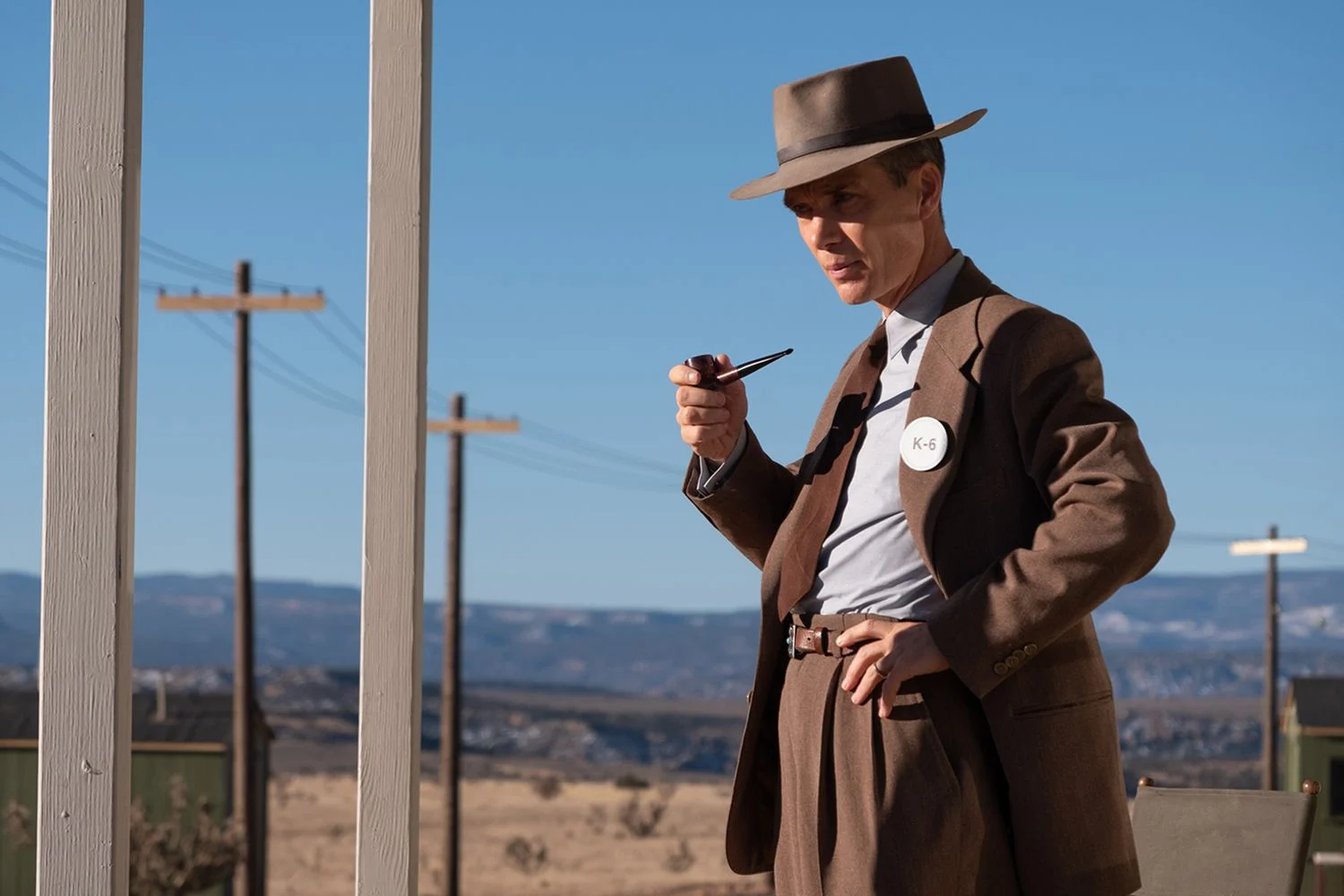
Even a well-made film like ‘Oppenheimer’ has small errors or takes creative license with history to enhance the story. You might notice these details on a second (or even fifth!) viewing, and they can change how you see certain scenes. This guide points out the most discussed inaccuracies and historical changes – what you see in the movie, why it differs from reality, and what is actually known to be true. Think of it as a helpful resource for getting even more out of a rewatch.
50-Star Flags in a 1945 Scene

An early version of the film included a mistake: American flags displayed 50 stars, even though the country only had 48 states in 1945. Alaska and Hawaii weren’t added until 1959, and the 50-star flag wasn’t officially released until 1960. News reports at the time pointed out this inaccuracy, but also noted that most of the film used historically accurate flags. Some reports suggested the error wasn’t present in all versions, meaning it might have been fixed later. Once you notice it, the incorrect flags are quite obvious.
“I Am Become Death” at Trinity

The film connects Oppenheimer’s famous quote from the Bhagavad Gita to the Trinity test, but the only proof he actually said it comes from a 1965 interview about the day of the test, July 16, 1945. Historians aren’t sure if he spoke those words during the explosion itself, or if he remembered them later. While the film uses the quote to add impact to the scene, the historical record suggests it’s unclear when he actually said it, and this context affects how audiences experience the moment.
The Pondside Einstein Conversation
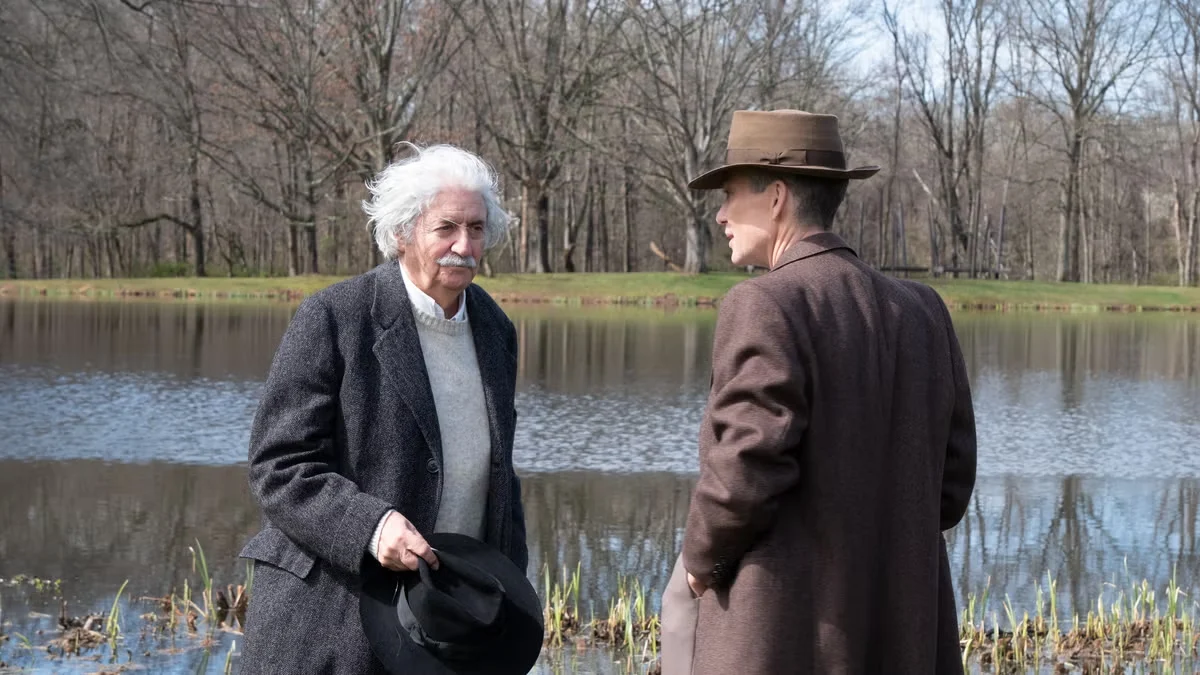
Nolan has admitted that the intense, one-on-one conversation between Oppenheimer and Einstein in the movie was created for dramatic effect. He also moved a specific scientific concern – the fear that a bomb could set off a global chain reaction – from the scientist Oppenheimer actually discussed it with (Arthur Compton) to Einstein, making it easier for the audience to understand. While the two men were colleagues at Princeton, the exact conversation shown in the film didn’t actually happen; it’s a fictionalized scene designed to be impactful, not a historical record.
Phone Swaps Ears Mid-Shot
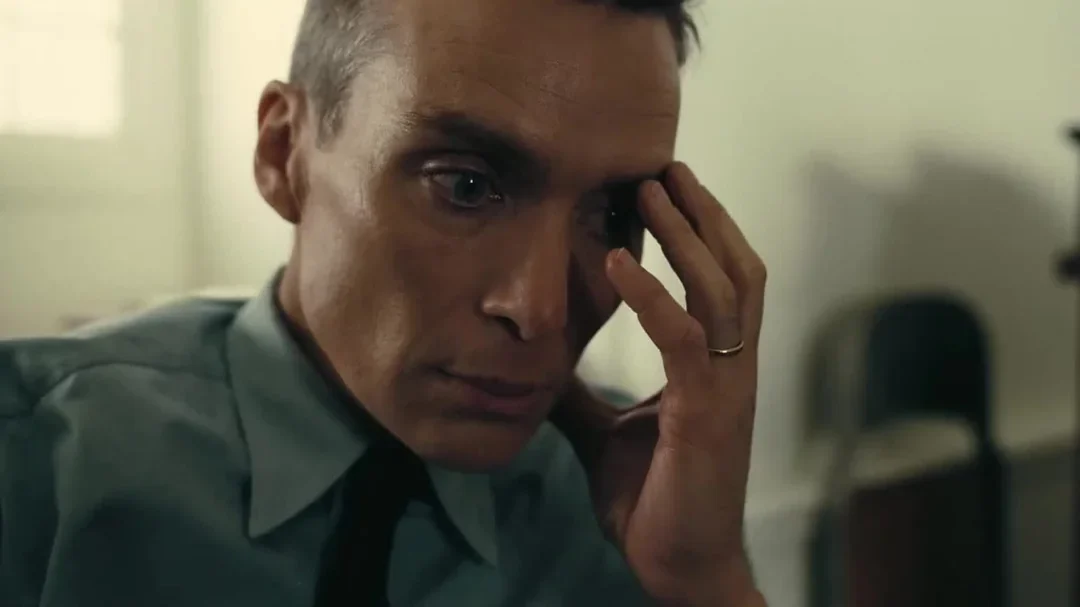
During a private security interview with Oppenheimer, a noticeable editing mistake occurs with a phone. In wide shots, he holds the phone to his left ear, but in close-ups, it’s at his right. Editors usually fix these kinds of errors with quick cuts to different angles, but this mistake is clearly visible if you watch the scene closely. Once you notice it, it’s hard to unsee every time the scene appears.
Wind Vanishes on the Trinity Tower

As Oppenheimer ascends the tower for the Trinity test, the wind dramatically changes—it’s strong at first, then suddenly stops when he reaches the top. While wind speed naturally fluctuates with altitude, this sudden shift feels like an editing mistake, as if the wind was reset between shots. This creates a noticeable, jarring effect when you’re watching the background, and it’s particularly distracting given how meticulously the rest of the scene is crafted.
A Scientist’s Position Jumps in the Desert

After a series of desert tests, a quick series of shots shows Lilli Hornig first walking over a hill, then instantly appearing much closer to the blast site near George Kistiakowsky, and then back on the hill again. This is a clear mistake in how the scene was filmed – the positioning of the actors doesn’t match up between shots. While editing can often create the illusion of compressed time and space, here the changes in location are too abrupt and happen within just a few seconds, revealing a simple continuity error that wasn’t caught.
Chalkboard Letters Change Between Cuts

During a classroom scene in the film, the way Oppenheimer writes the letters ‘C’ and ‘T’ on the chalkboard changes slightly between shots. This suggests the board was either rewritten or replaced with a different one, and the new version wasn’t an exact copy. Maintaining consistent chalk writing can be surprisingly difficult in scenes with a lot of dialogue, and in this case, the different letter shapes reveal the switch.
Glasses On, Glasses Off in the Hearing Room
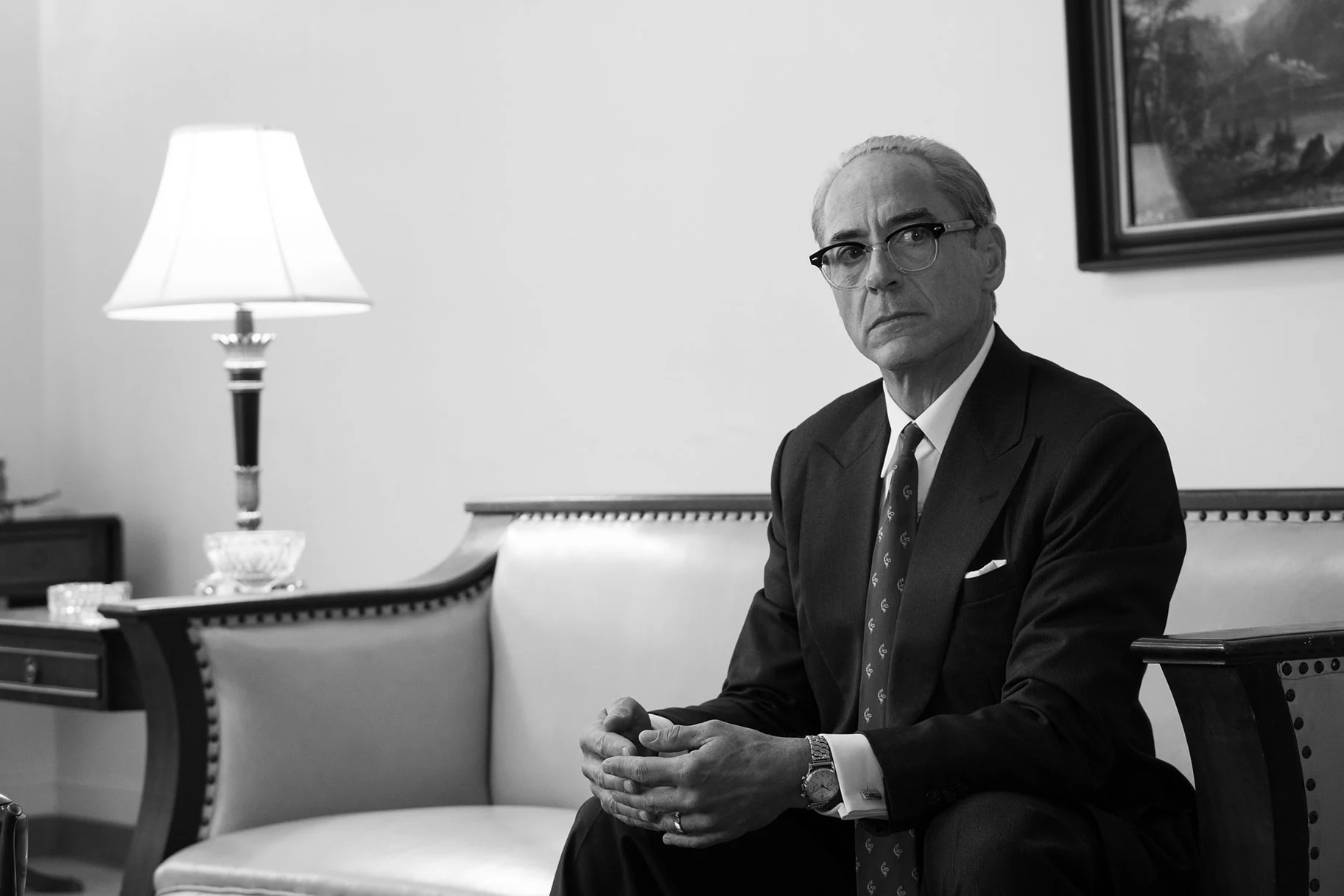
As a total film buff, I always notice the little details, and something struck me in this movie during a courtroom scene. The prosecutor, Roger Robb, is talking, and in one quick cut within the same line of dialogue, he suddenly has glasses on! Then, in the very next shot, they’re gone. It’s a super subtle edit – you’d probably miss it the first time around – but it’s a classic sign they were splicing together the best bits of performance from different takes. Once you see it, though, it’s impossible to unsee!
A Soaked Handout Dries Instantly
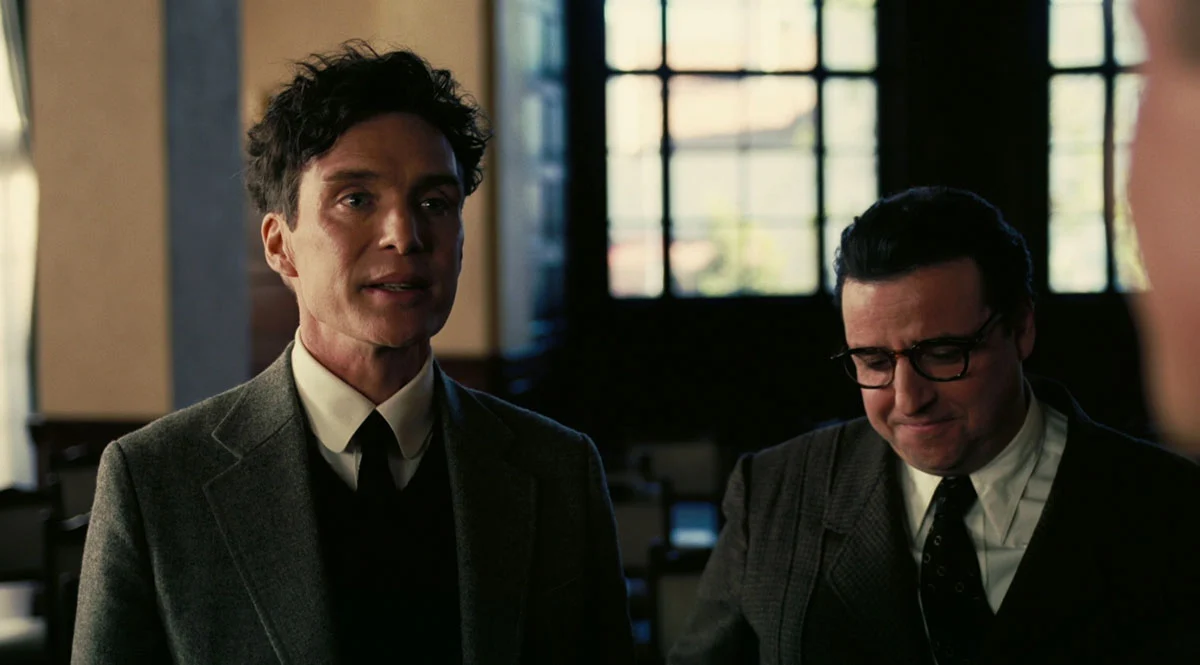
During filming, when Oppenheimer holds up a paper titled “The Impact of the Gadget on Civilization,” the lighting made it look wet in some shots and dry in others. It was difficult to keep the paper looking consistent because the way water affects its appearance changes quickly under the studio lights. This results in a slight but noticeable difference in texture between shots. Viewers might notice this inconsistency on the paper’s surface.
The Ranch Flask Doesn’t Hold Its Place

During a peaceful scene at the ranch, Oppenheimer and Kitty share a drink from a flask. While it appears he’s about to drink, a different camera angle reveals his hand is already lowered. This is a minor continuity error – the timing of his hand and the flask didn’t quite match up between shots. The scene still works emotionally, but once you notice the flask seems to jump, it’s hard to ignore. This is just one of a few similar, small mistakes with hand placements throughout the movie.
Let us know which mistake you noticed first—or if you’ve seen any other errors in ‘Oppenheimer’—by sharing them in the comments below!
Read More
- EUR TRY PREDICTION
- NextEra Energy: Powering Portfolios, Defying Odds
- The Reshoring Chronicles: Tariffs, Warehouses, and Digital Melancholy
- AI Stock Insights: A Cautionary Tale of Investment in Uncertain Times
- Hedge Fund Magnate Bets on Future Giants While Insuring Against Semiconductor Woes
- AI Investing Through Dan Ives’ Lens: A Revolutionary ETF
- UnitedHealth’s Fall: A Seasoned Investor’s Lament
- The Illusion of Zoom’s Ascent
- Oklo’s Stock Surge: A Skeptic’s Guide to Nuclear Hype
- USD PHP PREDICTION
2025-11-12 05:47